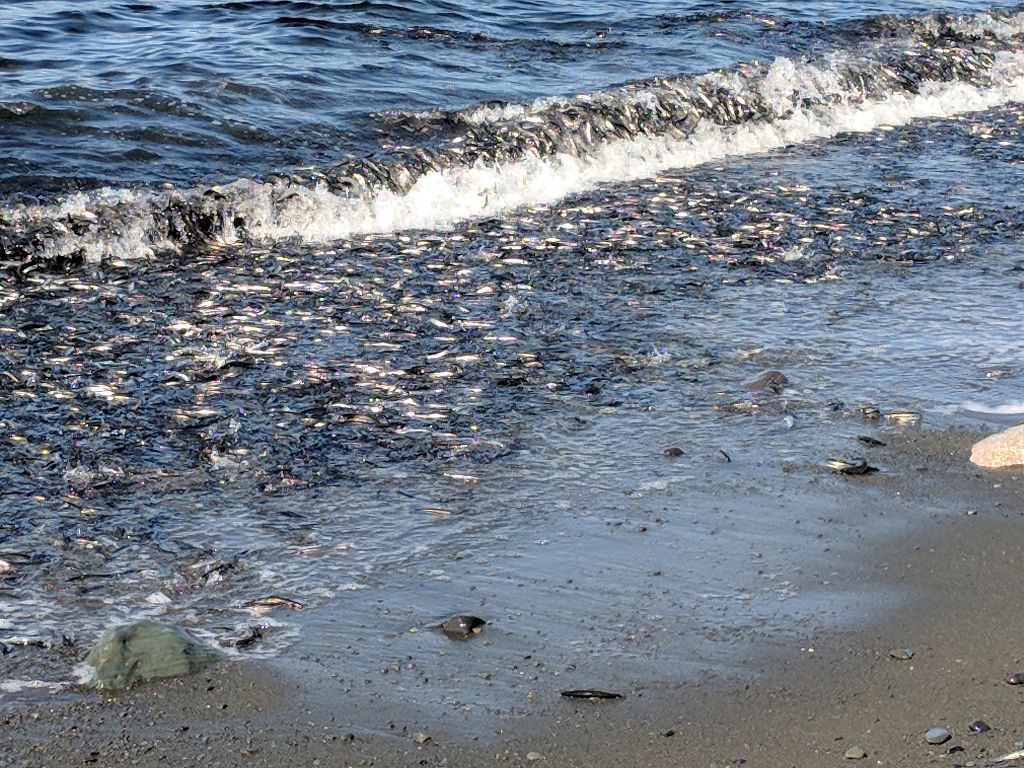
16 July 2018
Last Tuesday morning, 10 July 2018, I took a walk before breakfast at Witless Bay, Newfoundland to take in the scenery and watch the birds. When I stopped by the shore I never noticed the amazing spectacle at my feet. It was high tide and the waves were full of fish.
As I stood gazing out to sea, a local man pulled up in a jeep to see what I was looking at. He got out of the jeep and looked at the waves. “It’s good to see the capelin,” he said.
I didn’t understand what he was saying. “Pardon me?”
“Do you know about the capelin?”
“No,” I said. So he explained.
Capelin (Mallotus villosus) are small fish in the smelt family that form dense schools as they feed on plankton and krill. Their numbers attract the attention of everything that eats them — seabirds, mackerel and cod — and the whales that eat what capelin eat.
In Newfoundland the capelin come ashore every year in July but the exact date varies. People wait and watch for the spectacle to begin. Wikipedia explains:
Capelin spawn on sand and gravel bottoms or sandy beaches at the age of 2–6 years, and have an extremely high mortality rate on the beaches after spawning, for males close to 100%.
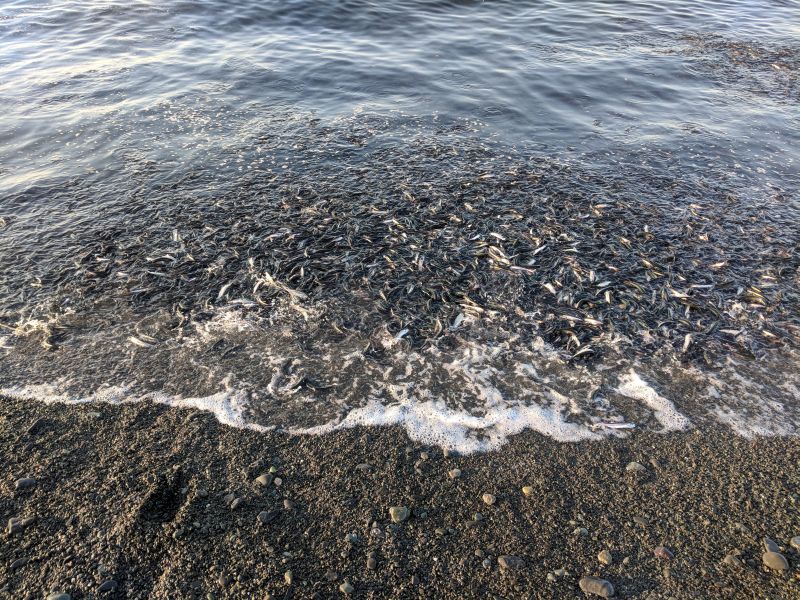
The fish flip-flop in shallow water as the females lay eggs and the males distribute sperm.
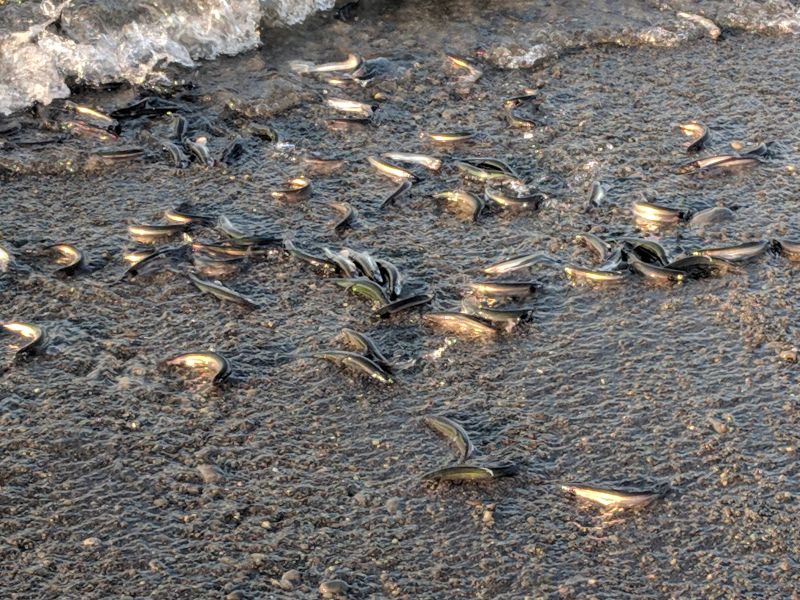
The number of capelin eggs is incredible. All the white spheres among these stones are capelin eggs, not grains of sand! The eggs can be food for shorebirds.
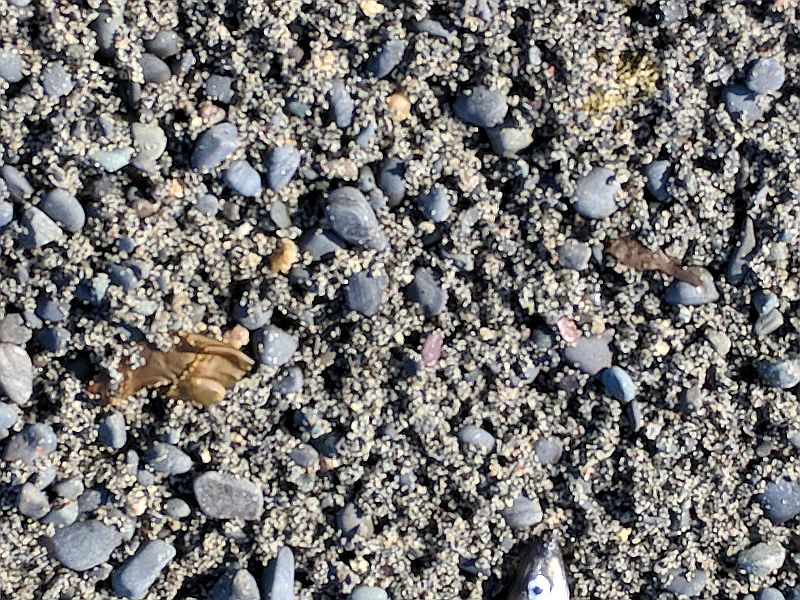
Some of the capelin don’t make it back to sea and are stranded, dying on shore. This provides on-shore food for scavengers including bald eagles, crows and foxes.
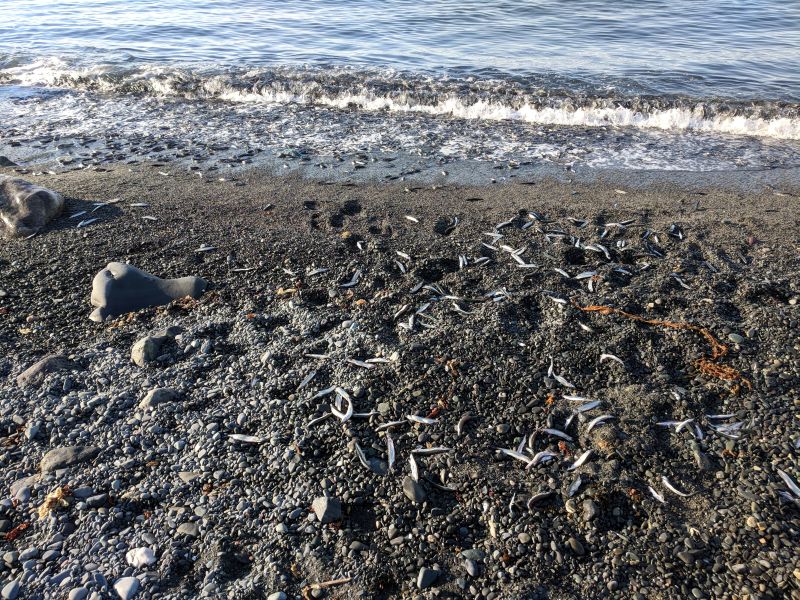
The waves are full of fish, but so is the sea. Here’s my video of the capelin-filled waves with black-legged kittiwakes flocking and diving on them before the capelin can reach shore.
Who else eats capelin? Half a million Atlantic puffins that nest at the Witless Bay puffin colony. Though this bird was photographed at the Faroe Islands, it shows how puffins can carry 8-10 capelin-sized fish in their beaks.
July 10 was the first morning the capelin had come back to Witless Bay and word of their arrival spread quickly. When our birding group came down after breakfast many villagers were already there. Some came to watch the capelin roll. Others brought buckets to collect fish to fertilize in their gardens. Some eat capelin, some don’t.
Come down to the bay. The capelin are rolling!
(Puffin photo from Wikimedia Commons; click on the image to see the original. All other photos and videos by Kate St. John)
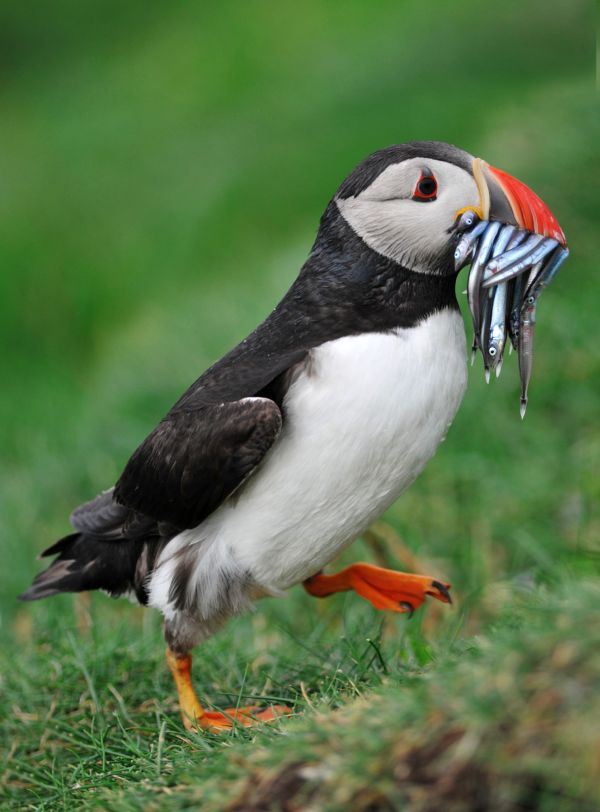
Great post today on the capelin invasion!!!
Great info, photos, and video. Thank you so much.
Bears love to eat the Capelin, too!
Very cool! Never knew about this. Love the timing of the Capelin coincides with the need to feed so many babies!
Hi Kate
You asked viewers to request attribution for use of your images.
I am interested in one of your Capelin rolling to the shore images as well as permission to use one of your contributors’–Erik Christensen–image of the puffin. I am writing a query for an online publication, and if accepted the requested images would be used for my story on Capelins in Newfoundland.
Thank you for your consideration,
Sher